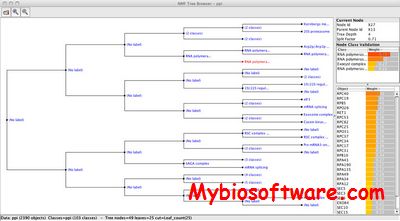Ensemble NMF 0.91 / NMF Tree Browser 0.98
:: DESCRIPTION
Ensemble NMF (Non-negative Matrix Factorization ) is a software for clustering and visualising protein interaction networks.
The NMF Tree Browser tool is a cross-platform Java application for visually inspecting a soft hierarchy as produced by the Ensemble NMF algorithm.
::DEVELOPER
the Machine Learning Group (MLG)
:: SCREENSHOTS
:: REQUIREMENTS
- Linux / Windows /Mac OsX
- Java / C++ Compiler
:: DOWNLOAD
:: MORE INFORMATION
Citation
Greene, D., Cagney, G., Krogan, N and Cunningham, P. (2008),
“Ensemble Non-negative Matrix Factorization Methods for Clustering Protein-Protein Interactions“,
Bioinformatics, 24, 15: 1722–1728.
